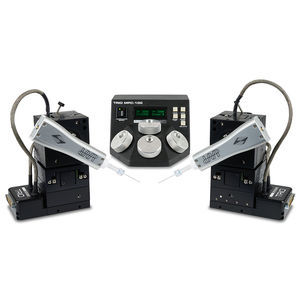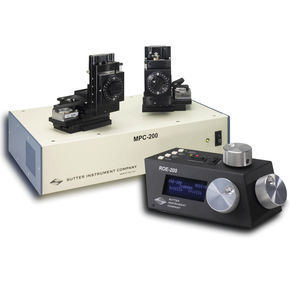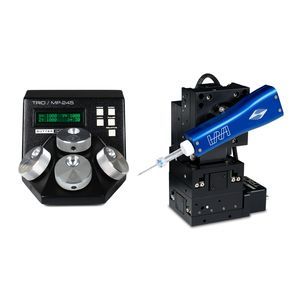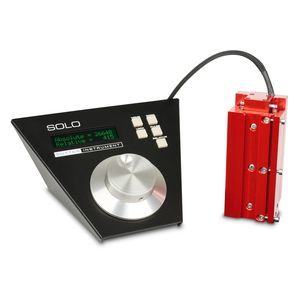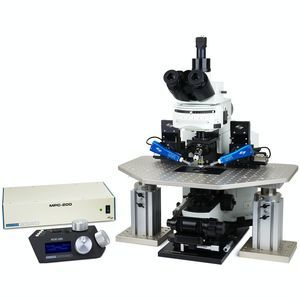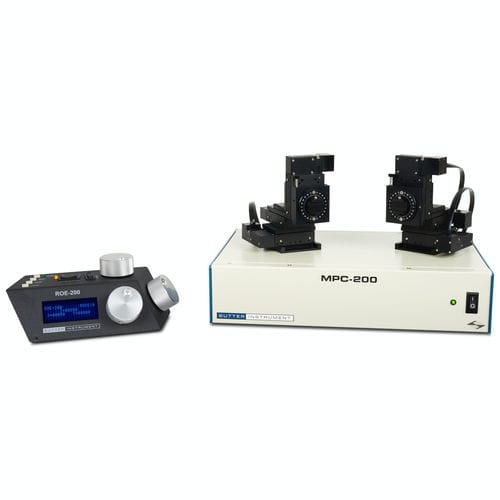
Motorized micromanipulator MPC-3253-axismultiple



Add to favorites
Compare this product
Characteristics
- Options
- motorized, 3-axis, multiple
Description
The MPC-325 System consists of the MPC-200 controller and one to four MP-225 micromanipulators.
MPC-200 Controller and ROE
Neurobiological experiments are becoming more complex. Many require multiple manipulators with control units that quickly become space and/or cost prohibitive. The MPC-200 is the solution you have been asking for. A single controller capable of running 2 manipulators! Sutter Instrument has taken the simplicity of the MP-225 controller and expanded it to run two manipulators from a single controller/ROE. The MPC-200 works with one or two of our world-renowned mechanicals, the MP-285 (MPC-385), the MP-225 (MPC-325) or the narrow format MP-865 (MPC-365).
If two manipulators aren't enough, a second controller can be daisy chained to allow the single ROE-200 to move up to four manipulators. Thus the system can be easily expanded to control highly sophisticated experiments.
The Sutter MPC-200 is electrically quiet. Unlike the competition, our multi-unit controller employs linear output circuitry. Sutter adds additional manipulators to the same controller without requiring potentially noisy chopper drives.
In all our manipulators, the 4th axis can be set up and changed without the need to connect an external computer to download and configure software. A separate configuration is allowed for each output on this manipulator controller. If desired, each manipulator can approach the prep at a different angle from the horizontal. The 4th axis can be configured between the X and Z axes or the Y and Z axes (useful when manipulator is rotated 90 degrees relative to the preparation).
VIDEO
Catalogs
MPC-200/MPC-385/MPC-325
1 Pages
Sutter Catalog
319 Pages
*Prices are pre-tax. They exclude delivery charges and customs duties and do not include additional charges for installation or activation options. Prices are indicative only and may vary by country, with changes to the cost of raw materials and exchange rates.






